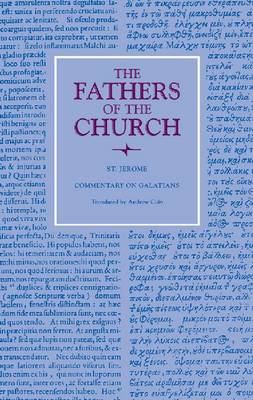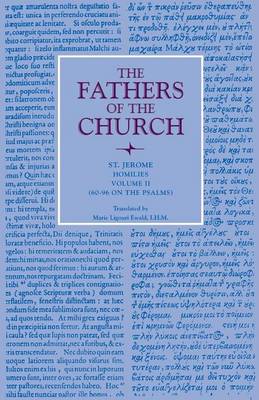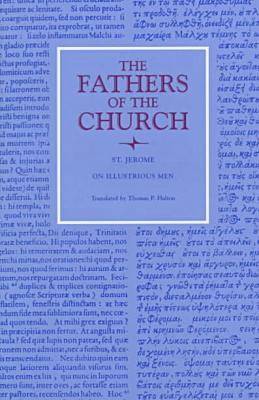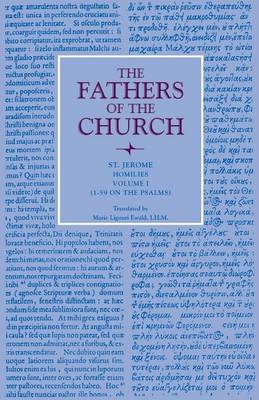Fathers of the Church
4 total works
Prior to the middle of the fourth century, the exegesis of St. Paul had been monopolized by Greek and Syriac commentators. Then, in the space of half a century (c. 360 - c. 409), there appeared no less than 52 commentaries by six different Latin authors. This sudden flurry of literary activity has been dubbed the western "Renaissance of Paul." Jerome's commentaries on four Pauline epistles (Galatians, Ephesians, Titus, Philemon), which he composed in 386 shortly after establishing himself in Bethlehem, occupy a central place in this relatively short but prolific segment of the history of Pauline exegesis in Latin.
Jerome was the greatest biblical scholar of the ancient Latin church, and his Commentary on Galatians is one of the crowning achievements of his illustrious career. It far outclasses the five other contemporary Latin commentaries on Galatians in its breadth of classical and patristic erudition, Hebrew and Greek textual criticism of the Bible, and expository thoroughness. It is unique also because it is the only one of the Latin commentaries to make the Greek exegetical tradition its main point of reference. Jerome's Commentary in fact preserves, in one form or another, a treasure-trove of otherwise lost Greek exegesis, particularly Origen's Commentary on Galatians, from which he worked very closely when composing his own work.
Jerome's Commentary on Galatians is presented here in English translation in its entirety. The introduction and notes situate the Commentary in its historical, exegetical, and theological contexts and also provide extensive coverage of ancient and modern scholarly debates about the interpretation of Paul's epistle.
ABOUT THE TRANSLATOR:
Andrew Cain is associate professor of classics at the University of Colorado at Boulder. He has published widely on Jerome and other late Latin writers. He has authored The Letters of Jerome: Asceticism, Biblical Exegesis, and the Construction of Christian Authority in Late Antiquity and has co-edited Jerome of Stridon: His Life, Writings, and Legacy as well as The Power of Religion in Late Antiquity.
This volume of the Homilies of Saint Jerome contains fifteen homilies on Saint Mark's Gospel, Homilies 75-84. In general, as in Volume 1, Morin's text has been followed as reproduced in the Corpus Christianorum, series latina 78.
The editors of the Corpus have added two homilies, one delivered on the Feast of the Epiphany from the Gospel of our Lord's baptism and on Psalm 28, edited by B. Capelle; the other on the First Sunday of Lent, edited by I. Fraipont. In the present volume, they are Homilies 89 and 90.
Dom Germain Morin, as noted in the Introduction of Volume 1 of this translation, discovered fourteen homilies, providing a second series on the Psalms, in four Italian Codices dating from the tenth and fifteenth centuries. He examined with great care their probable identity with, or relationship to, the lost homilies of Saint Jerome catalogues in De viris illustribus 'on the Psalms, from the tenth to the sixteenth, seven homilies.' There is more work to be done and many problems to be resolved, however, before this identification can be established with certitude. This chief obstacle is that of chronology. The De viris illustibus was written in all probability in 392-393, whereas the homilies appear to have been written in 402, the date determined by the study of Dom Morin. Other scholars, as U. Moricca, A. Penna, G. Grutzmacher, give 394 and 413 as the earliest and latest dates, respectively, for all the homilies.
There is question also whether the Septuagint or the Hebrew Psalter was in the hands of Jerome when he wrote or preached the homilies on Psalms 10 and 15. They seem, in fact, to have been written rather than delivered, for he speaks of readers rather than hearers. They differ from the regular series of sermons in their greater erudition, more sophisticated language, many Greek expressions, and variations from the Hexapla. The closing doxology so characteristic of the other sermons is missing in them. They are much longer, and Jerome speaks of certain details as if he had already explained them. On the whole, they give evidence, too, of greater care in preparation.
This volume contains fifty-nine homilies preached by St. Jerome on selected Psalms. Jerome's knowledge of the "three Sacred Languages," Latin, Greek and Hebrew, his acquaintance with the exegetical methods of Antioch and Alexandria, his use of Origen's Hexapla and his work on the Psalter are impressive credentials for the quality of these works.
As far as can be determined now these homilies were intended primarily for the instruction and edification of the monastic community that Jerome had established in Bethlehem where he spent the closing years of his life. They were recorded by scribes in the audience, and consequently the text may at times reflect the inadequacies of the listener.
Whether all the homilies that appear here are extemporaneous products of Jerome's vast erudition and eloquence is a question that still awaits a satisfactory answer. Some scholars believe that an affirmative answer is correct, others citing the evidence of Homily 69 on Psalm 91, think that the content of some homilies is too deeply theological to be an impromptu composition. In any event, some patristic scholars have been bold enough to declare Jerome the most learned Latin Father of the Church.



